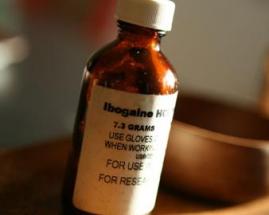A HEROIN ADDICT’S HALLUCINOGEN?

Addiction Law, History and Public Policy Articles
Addiction Research Articles
Ibogaine Research
Ibogaine Research and Articles
Psychedelic & Interventional Medicine
Ibogaine
Overview
Originally Published: 06/17/2016
Post Date: 06/17/2016
Source Publication: Click here
Similar Articles: See the similar article
Summary/Abstract
Ibogaine is a potent hallucinogenic drug that is derived from the African shrub, Tabernanthe Iboga. The substance has been used in spiritual ceremonies in Western Africa for generations but has more recently become known as an addiction treatment medication that greatly reduces the severity of opioid ( Heroin withdrawal sympyoms and also reduces cravings for substances such as alcohol, cocaine, methamphetamine and nicotine
Content
FIFTEEN YEARS INTO A NATIONAL TREND of increasing overdose deaths, there is an imperative to develop better medications to treat addiction. Ibogaine, a chemical derived from the root bark of an African plant, may provide a key. In animals, a single dose of ibogaine decreases signs of opioid withdrawal and produces sustained reductions in the self-administration of heroin, morphine, cocaine, nicotine and alcohol. Effects in humans closely parallel these findings. Ibogaine is illegal in the U.S., where it has been classified as a hallucinogen since 1967, and unregulated but available in Canada and Mexico. New Zealand, South Africa and Brazil authorize the use of ibogaine by licensed medical practitioners.
In 1990, Congress mandated the National Institutes of Health to develop medications to treat addiction. The NIH undertook a program of research on ibogaine in 1991, and developed a structurally similar and potentially safer ibogaine analogue known as 18-MC. But further development of 18-MC is stalled by lack of funding. The NIH now supports the development of medications to treat addiction with less than $100 million annually, while the cost of developing a single drug to final FDA approval can exceed $1 billion. In the private sector, pharmaceutical companies are avoiding new, disruptive pharmacological paradigms and opting for the lower-risk—and lower-cost—strategy of developing “me too” versions of approved drugs.
The need for a fundamentally new pharmacological treatment for addiction has never been more urgent. Policy aimed at the private sector needs to better incentivize the financial risk of innovation. Creative, high-risk research, neglected in the pharmaceutical sector, needs substantial public funding. Improving addiction treatment has a cost. The alternative, in human and economic terms, is extravagant.
Dr. Kenneth Alper is professor of psychiatry and neurology at the New York University School of Medicine.





